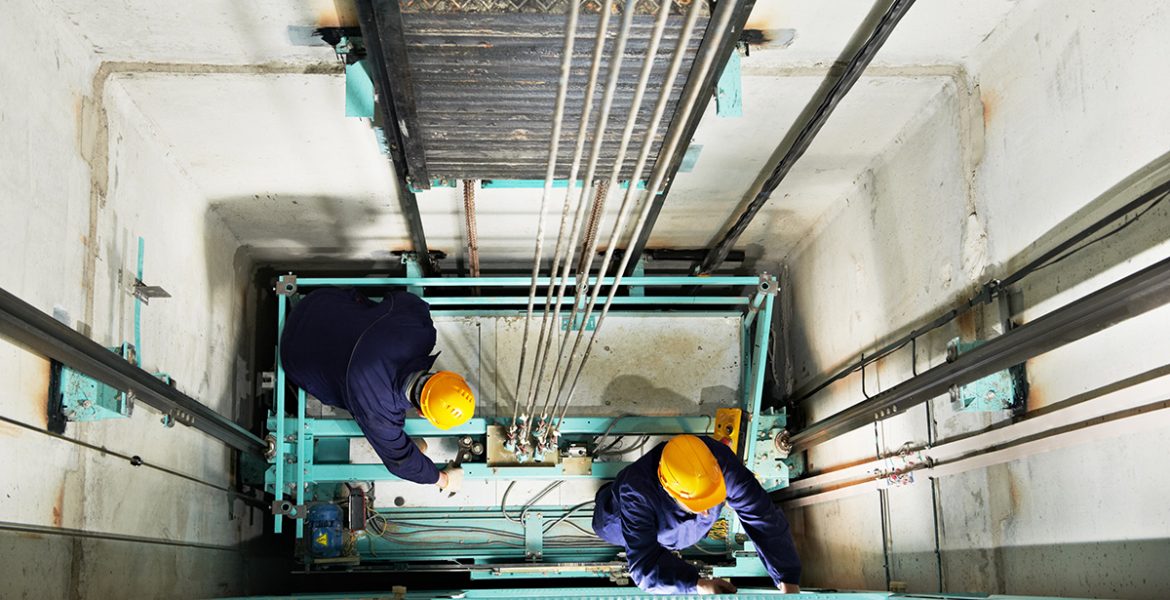How Lift Maintenance London Attracts Attention Amongst Local Lift Repair Companies
How Lift Maintenance London Attracts Attention Amongst Local Lift Repair Companies
Blog Article
Comprehensive Overview to Elevator Equipments and Their Upkeep
Browsing the elaborate globe of lift systems and their upkeep is a task that demands accuracy and expertise. From the numerous types of lift systems in operation to the careful adherence to safety and security laws, the maintenance of these upright transport tools is a complex venture. As structures rise higher and technology developments, the need for an extensive understanding of elevator systems comes to be increasingly critical. Join us as we unravel the complexities of lift maintenance, discovering usual concerns, best techniques, and cutting-edge technologies that form the modern-day landscape of upright transport.
Types of Elevator Systems
The most typical kinds consist of hydraulic lifts, grip elevators, machine-room-less lifts, and vacuum cleaner elevators. Hydraulic elevators are optimal for low-rise buildings and utilize a hydraulic piston to relocate the elevator automobile. Machine-room-less lifts are a space-saving option as they do not call for a separate equipment area for the elevator equipment.
Each sort of lift system has its very own benefits and downsides, making it important for building proprietors and designers to very carefully consider their particular requirements prior to choosing one of the most appropriate option. Aspects such as constructing elevation, area accessibility, power effectiveness, and budget plan restraints all play a considerable function in figuring out the ideal elevator system for a specific building.
Common Upkeep Problems
Regular maintenance of lift systems is crucial to ensure smooth operation and lengthen their lifespan. In spite of routine maintenance, lift systems can still experience common maintenance issues that need to be without delay resolved to avoid interruptions in service. Normal evaluations and aggressive maintenance can help determine and resolve these usual maintenance concerns before they intensify and influence the overall performance of the elevator system.
Safety Regulations and Conformity
Following rigorous safety policies and guaranteeing compliance with industry criteria are extremely important for keeping the operational stability of elevator systems. Elevators are subject to a thorough collection of safety guidelines to protect travelers, maintenance workers, and the basic public. Governing bodies such as the Occupational Security and Health Administration (OSHA) in the USA and the European Lift Association (ELA) in Europe establish standards that cover different aspects of lift style, upkeep, installation, and operation.
Conformity with these regulations is not just a lawful demand but likewise a this moral obligation for building owners and elevator upkeep business. Routine examinations, upkeep checks, and adherence to safety methods outlined in the policies are crucial to ensure the secure and effective operation of elevator systems.
Best Practices for Maintenance

Building proprietors need to additionally consider spending in modernization upgrades to improve the performance and safety of their lift systems. By complying with these finest practices, elevator systems can run smoothly and safely, giving reliable upright transport for occupants.

Advanced Technologies for Effectiveness
Carrying out advanced innovations in elevator systems can substantially boost functional effectiveness and guest experience. These systems enable passengers to input their desired flooring before going into the lift, which then guides them to the most efficient cars and truck.
Furthermore, the integration of clever sensing units and anticipating maintenance capacities has actually changed elevator upkeep. These sensors can discover potential concerns before they escalate, allowing aggressive upkeep interventions and reducing downtime. Furthermore, the usage of energy-efficient parts and regenerative drives helps decrease power usage and operating expense in lift systems.
In addition, the application of cloud-based surveillance and remote diagnostics permits for real-time monitoring of lift performance and immediate troubleshooting of any kind of breakdowns. This positive method not only boosts system reliability but also improves the overall individual experience by making certain smooth and continuous lift operations.
Final Thought
In verdict, recognizing the different kinds of elevator systems, typical maintenance issues, safety policies, best upkeep methods, and progressed technologies for effectiveness is important for guaranteeing their website the smooth procedure of elevators. By sticking to safety regulations and applying best methods for upkeep, structure owners can extend the life-span of their lift systems and make sure the safety and security of guests. It is necessary to stay upgraded on the most current advancements in elevator innovation to boost effectiveness and integrity.
The most typical types consist of hydraulic lifts, grip lifts, machine-room-less lifts, and vacuum elevators. Hydraulic lifts are excellent for low-rise structures and use a hydraulic piston to move the elevator car. Machine-room-less lifts are a space-saving option as they do not call for a different device room for the lift equipment. Routine assessments and aggressive maintenance can help identify and fix these usual maintenance problems prior to they rise and influence the total performance of the elevator system.

Report this page